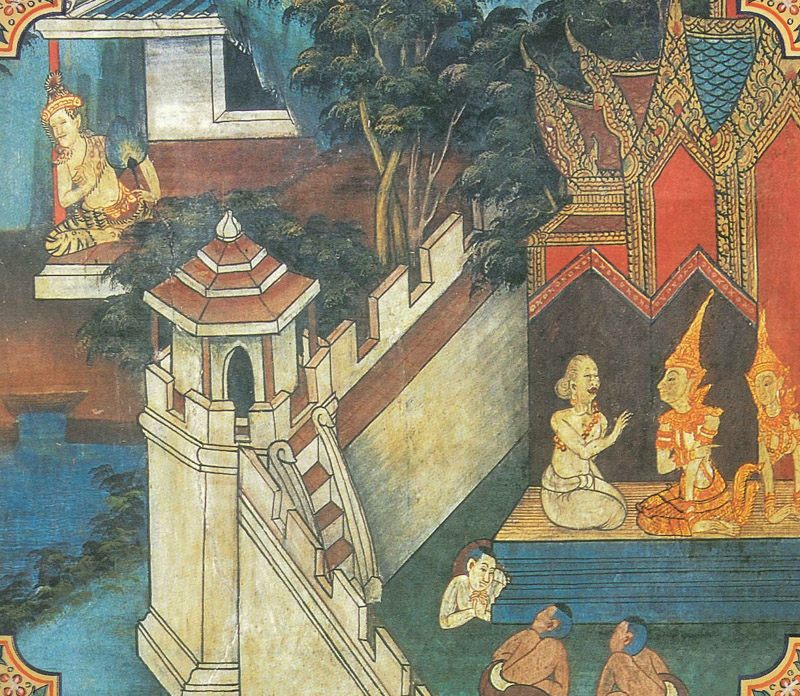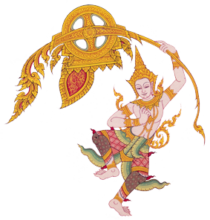
The Bodhisatta was once a king. His father was a royal chaplain, and the Bodhisatta was born on the same day as the king’s son, so the two boys were raised and educated together. When the king died and the prince took the throne, he made the Bodhisatta his chaplain. One day the king made a procession around the city on his elephant. The queen mother saw the Bodhisatta riding behind the king and fell in love at first sight. Thinking he was unattainable, she grew depressed and stopped eating, feeling she might die from sorrow. She was too ashamed to tell the king her problem, but because women do not hide secrets from other women, she eventually confided in the queen, who then told her husband. Wanting to save his mother’s life, the king decided that if the Bodhisatta married her, he would give him the throne and he himself would serve as viceroy. Reluctantly, the Bodhisatta agreed, but he soon veered back toward a religious life and started to avoid all pleasures.
The queen assumed the young Bodhisatta was turned off by her old age and believed he would start to seek her company if he thought he had a grey hair. So one day while she was cleaning his head, the queen told the Bodhisatta she saw a grey hair. When he asked to see it, she pulled one of his hairs out, but tossed it aside and put one of hers in his hand. Seeing it filled him with fear of death, and he began to sweat. Believing he had aged prematurely due to pursuing desires, like a pig wallowing in filth, the Bodhisatta decided to give the throne back to his friend and go off to the Himalayas to live as an ascetic. Hearing that her scheme had backfired, the queen admitted her lie and begged him to stay. But the Bodhisatta preached that decay is inevitable for all living beings and did not change his mind.
In the Lifetime of the Buddha
One time the Buddha heard some of his disciples discussing the magnificence of his Great Renunciation, which was the beginning of his path to enlightenment. He told them this story as an example of a similar renunciation in his past.
The king was an earlier birth of Ananda, one of the Buddha’s top disciples, and the queen mother was an earlier birth of the Buddha’s wife.
